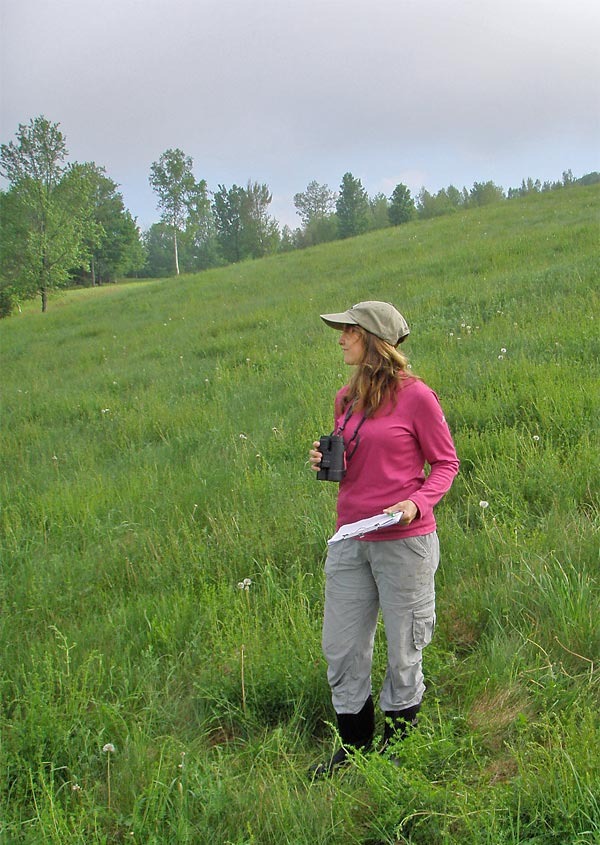Amidst steep, continental declines in grassland bird populations, core habitat in the Great Plains and Midwest is now under siege. Millions of acres of bird habitat have been destroyed in the last five years in response to demands for corn ethanol and soy biodiesel. Meanwhile, drastic slashes in the federal Farm Bill’s conservation measures are adding salt to the wound.
Here in the forested Northeast, there is surprising opportunity. Not only do Vermont and other northeastern states provide habitat for declining grassland species, but the lands are not vulnerable to the same pressures as in other regions of the country.
VCE is making the most of the situation with the Upper Valley Grasslands Initiative. Our aim is to map grassland “hotspots” in the Upper Valley of the Connecticut River and enlist landowners to enhance habitat for the Bobolinks, Eastern Meadowlarks, and other grassland birds.
The first mission of the initiative was to reveal strongholds of grassland bird habitat in the Upper Valley. In the project’s first field season last year, VCE collaborated with New Hampshire Audubon to recruit 27 citizen scientists. With Plymouth State University graduate student Jamie Sydoriak in the lead, the team of volunteers surveyed 230 fields in a 1,170 square mile area.
Now, with a map of the hotspots that are bird-abundant, VCE and its collaborators will reach out to willing landowners in those areas, providing advice and resources to manage for birds. Our first step was a survey mailed to 310 Upper Valley grassland landowners. Modeled after a University of Vermont project in the Champlain Valley, the survey queried landowners about their objectives, management practices, interests, priorities and views. The response rate was a whopping 25 percent (very high in the survey world), with 70 percent of respondents wanting more information about how to manage their land to benefit grassland birds.
After the cold winter months have passed, Jamie will be back in the field, resources in hand, talking to landowners about how they might improve their grasslands for birds. In the end, the aim is to develop a network of “grassland ambassadors” – landowners who not only manage their own property to benefit the birds, but also serve as a resource to other landowners.
For more information on the project contact VCE’s Roz Renfrew.

